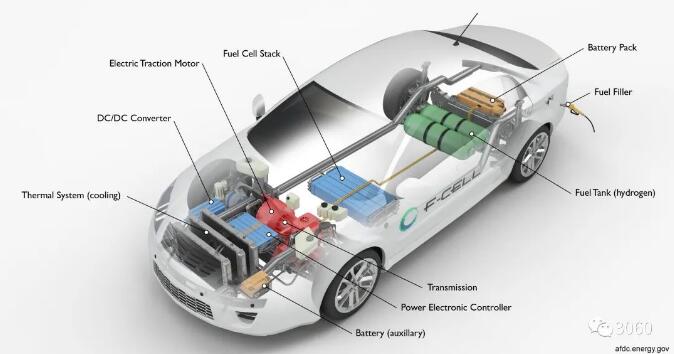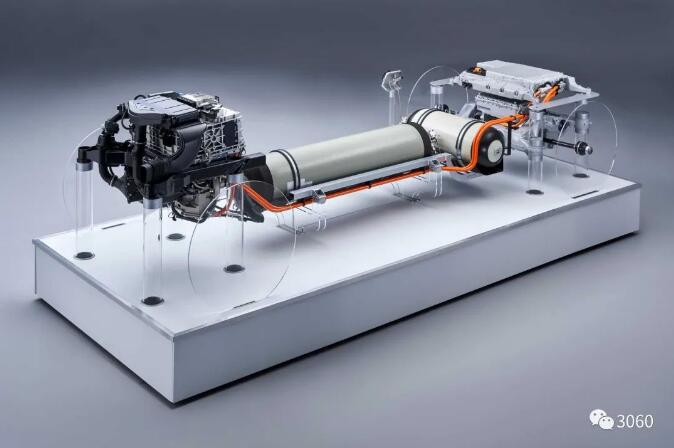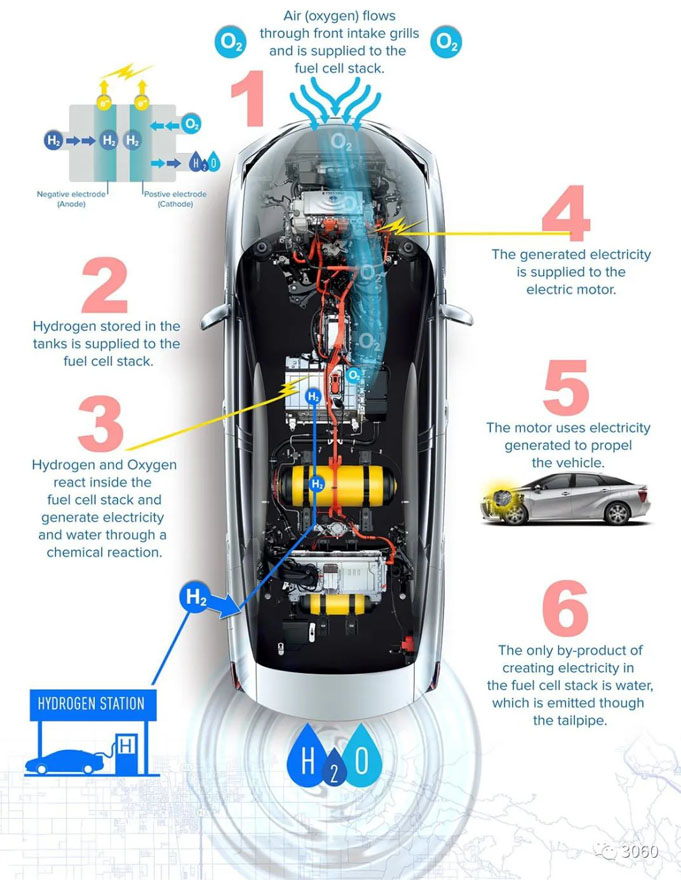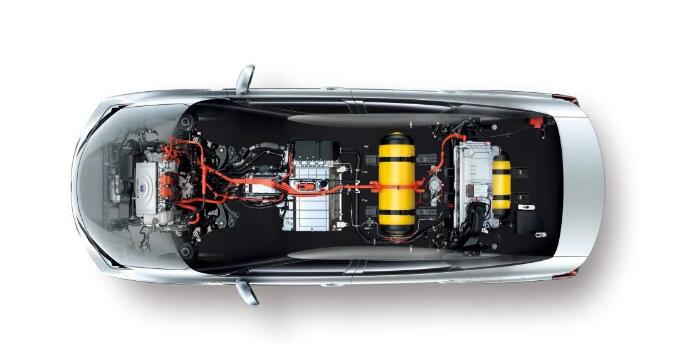This paper is selected from the Journal of Chinese Academy of engineering, Chinese Engineering Science, issue 4, 2021
Authors: Liu Yingdu, Guo Hongxia, Ouyang Xiaoping source: development status and future prospects of hydrogen fuel cell technology
[J]. China Engineering Science, 2021,23 (4): 162-171
3060 carbon peak carbon neutralization 3060 carbon peak, carbon neutralization policy, technology, path and scheme information sharing
23 original content
official account

Editor's note
As a clean energy that can store waste energy and promote the transformation from traditional fossil energy to green energy, the energy density of hydrogen energy is 3 times that of oil and 4.5 times that of coal, which is regarded as the disruptive technical direction of the future energy revolution. Hydrogen fuel cell is the key carrier to realize the conversion of hydrogen energy into electric energy. After the goal of carbon neutralization and carbon peaking was put forward, it has received new high attention from the level of basic research and industrial application.
The research team of academician Ouyang Xiaoping of the Chinese Academy of Engineering published the development status and future prospects of hydrogen fuel cell technology in the fourth issue of the Journal of the Chinese Academy of Engineering in 2021, analyzed the research and application status of key materials and core components of hydrogen fuel cell technology at home and abroad, condensed the problems faced by the development of hydrogen fuel cell technology in China, combed the development direction of relevant technologies in the future, and put forward safeguard measures and suggestions, In order to provide basic reference for the development of industry technology. Focusing on the technical system of hydrogen fuel cell, this paper analyzes the research progress and development trend of membrane electrode components such as proton exchange membrane, electrocatalyst, gas diffusion layer, bipolar plate, system components, control strategy and so on; Combined with the analysis of the development status of localization rate, system life, power density and manufacturing cost in the field of hydrogen fuel cell technology in China, the development direction of hydrogen fuel cell technology system in China in 2035 is demonstrated and proposed. The article points out that in order to accelerate the application of hydrogen energy and hydrogen fuel cell technology, we should strengthen the research of hydrogen production tech




1、 Foreword
The current economic development model based on the consumption of coal, oil and natural gas has led to increasingly prominent environmental pollution and greenhouse effect. In order to realize the sustainable development of human society, establish a harmonious relationship between man and nature, and develop green energy such as wind energy, hydropower, solar energy, biomass energy, geothermal energy, ocean energy, has become a topic of great concern to countries all over the world. The inherent gap, randomness and volatility of most renewable energy sources have led to serious wind, light and water abandonment. Hydrogen energy is a clean energy that can store waste energy and promote the transformation from traditional fossil energy to green energy. Its energy density (140 mj/kg) is three times that of oil and 4.5 times that of coal. It is regarded as a disruptive technological direction of the future energy revolution.
Hydrogen fuel cell is a power generation device that takes hydrogen as fuel and directly converts the chemical energy in the fuel into electric energy through electrochemical reaction. It has the advantages of high energy conversion efficiency, zero emission and no noise. The corresponding technological progress can promote the development and upgrading of hydrogen preparation, storage, transportation and other technological systems. Driven by the new round of energy revolution, countries all over the world attach great importance to hydrogen fuel cell technology to support the realization of low-carbon and clean development mode. Developed countries or regions have actively developed the "hydrogen economy", formulated development plans such as the comprehensive energy strategy (the United States), the European Union hydrogen strategy (the European Union), and the hydrogen / fuel cell strategic development roadmap (Japan), and promoted the R & D, demonstration, and commercial application of fuel cell technology. China has also actively followed up the development strategy related to hydrogen energy, and established the "three vertical and three horizontal" strategy including fuel cells in the 863 plan in 2001; National policy documents such as the energy technology revolution and innovation action plan (2016-2030) and the medium and long term development plan of the automotive industry (2017) clearly support the development of fuel cell vehicles. In 2020, the Ministry of science and Technology launched the key special project of the national key research and development plan "renewable energy and hydrogen energy technology", which will focus on breakthroughs in common key technologies such as proton exchange membrane, gas diffusion layer carbon paper, vehicle fuel cell catalyst batch preparation technology, air compressor durability, high reliability stack and so on. The National Energy Administration listed hydrogen energy and fuel cell technology as the key task of energy technology and equipment during the 14th Five Year Plan period.
Research shows that hydrogen energy and hydrogen fuel cell technology are expected to be widely used in automotive, portable power generation, fixed power stations and other fields. They are also important technical alternatives for aerospace vehicles and marine propulsion systems, but they face three major challenges: low production cost (basic materials such as electrolytes and catalysts), structural compactness, durability and life span. The fuel cell technology project of the U.S. Department of energy believes that fuel cell electric vehicles are one of the most effective ways to reduce greenhouse gas emissions and reduce oil consumption. With technological progress, the production cost and hydrogen fuel cost of the whole process will be equivalent to other types of vehicles and fuels. Optimizing the system control strategy and developing new basic materials such as catalysts and their anti-corrosion carriers are effective ways to improve the durability and life of the system and promote the large-scale commercial application of hydrogen fuel cell technology. Recent overview research work reports the new progress of hydrogen fuel cell systems in materials or components such as bipolar plates, gas diffusion layers, catalysts, membrane electrodes, flow field design and analysis.
China has put forward the development vision of achieving carbon peak in 2030 and carbon neutrality in 2060. Actively developing hydrogen energy and guiding the transformation of high carbon emission hydrogen production process to green hydrogen production process is an important measure for energy innovation and development to achieve carbon peak and carbon neutralization. Hydrogen energy will be a strategic emerging industry in China's energy field, and hydrogen fuel cell technology is a prerequisite for realizing the utilization of hydrogen energy.
In order to promote the all-round development of China's hydrogen fuel cell technology industry chain, relying on the support of the consulting project of the Chinese Academy of engineering, this paper analyzes the research and application status of key materials and core components of hydrogen fuel cell technology at home and abroad, condenses the problems faced by China's development of hydrogen fuel cell technology, combs the future development direction of related technologies, and puts forward safeguard measures and suggestions, in order to provide basic reference for the development of industry technology.
2、 Technical system and development status of hydrogen fuel cell
Unlike common lithium batteries, hydrogen fuel cells have a more complex system, which is mainly composed of electric stacks and system components (air compressors, humidifiers, hydrogen circulation pumps, and hydrogen bottles). The stack is the core of the whole battery system, including each battery unit composed of membrane electrode and bipolar plate, as well as collector plate, end plate, sealing ring, etc. The key materials of membrane electrode are proton exchange membrane, catalyst and gas diffusion layer. The durability (and other properties) of these components and materials determine the service life and working condition adaptability of the stack. In recent years, research on hydrogen fuel cell technology has focused on stacks, bipolar plates, control technology, etc. the hydrogen fuel cell technology system and some related frontier research are shown in Figure 1.

If copyright and other issues are involved in the image and text source network, please contact us for deletion, thank you!









